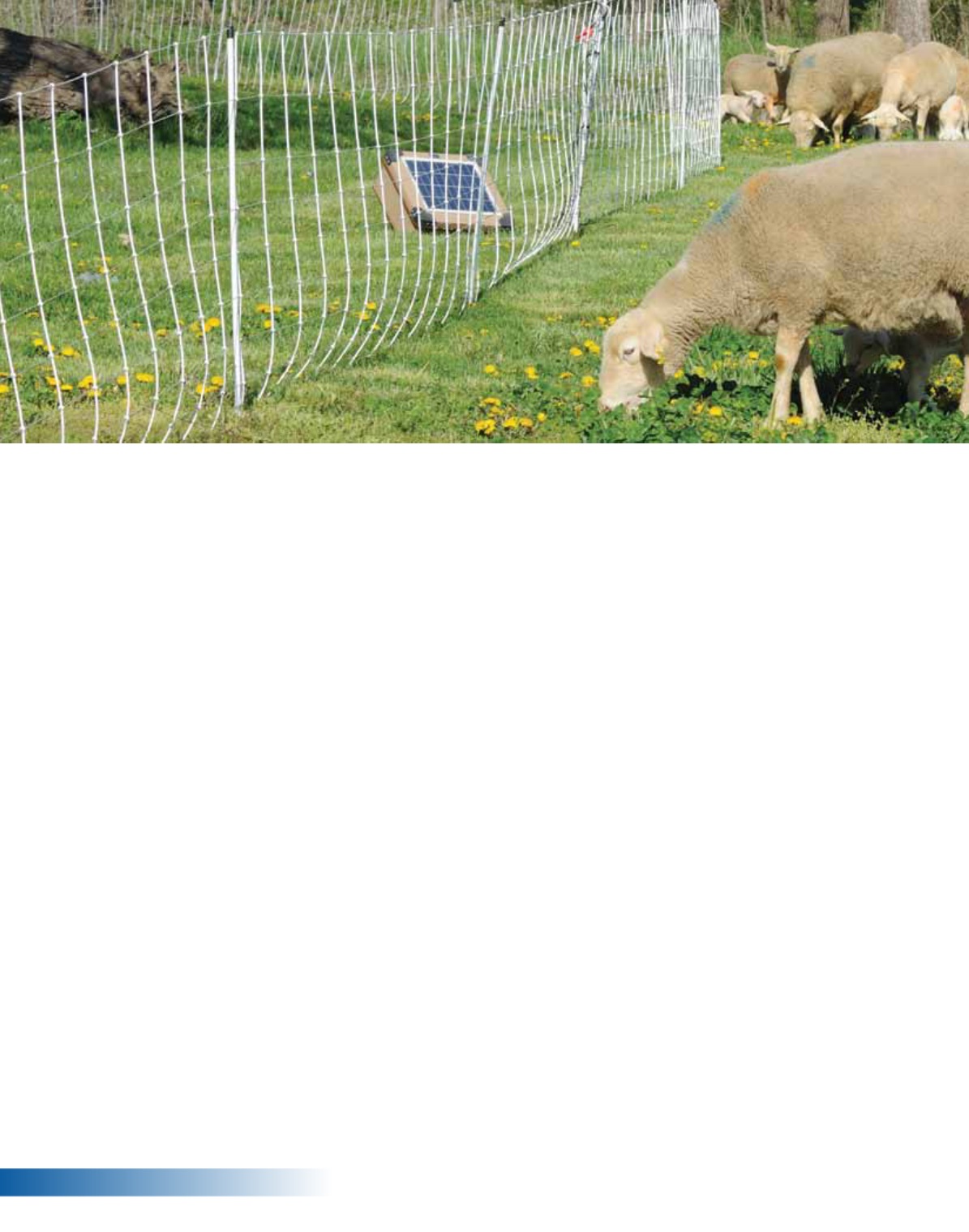
90 ENERGIZERS & SOLAR PANELS
www.premier1supplies.com• 1-800-282-6631
How do solar energizers compare to
other fence energizers?
1. Their output is the same—a very brief
high voltage pulse of energy.
2. Their input source is a DC battery.
3. When the sun shines, the solar
panel recharges the battery—which
eliminates the hassle of carrying the
battery to/from a recharger.
4. They’re larger in physical size than
110 volt energizers—because of the
solar panel, battery and case.
5. They are more expensive per unit of
output—again because of the battery,
solar panel and larger case.
How do solar energizers differ from
one another?
• Input needs (in milliamperes per hr).
• Pulse energy output (joules).
• Pulse rate per minute.
• Size of battery (in amp hrs) per
milliampere of draw
• Size of solar panel (in watts and volts)
per milliampere of draw.
• Number of days the battery will last
on its own without sunlight.
• Cost/joule of output and durability.
What are the negatives of solar?
• Most expensive per joule of output.
• Usually lower pulse frequency—which
reduces its ability to stop predators.
• More maintenance including:
1. Keeping the panel free of dust,
snow and ice.
2. Keeping the panel fully exposed to
the sun—unshaded by trees, grass,
fence posts or buildings.
3. In the winter’s cold the capability
of the battery goes down just when
the amount of available sunlight to
recharge them is at the lowest level.
Are solar energizers less expensive?
No. Plug-in units cost less because they
don’t need a battery or a solar panel.
Are they less costly to operate?
No. The cheapest energizer to operate
plugs into 110-volt AC current.
Consider—a Kube 4000 provides 10
times more pulse energy than most
farmstore solar units. Yet it uses less than
70 watts/day. That’s only $2.50 per year!
By comparison the battery in a typical
farmstore solar fence energizer (1/10 the
energy output of a Kube 4000) costs $24
and may need replacing every 2 years—
an annual operating cost of $12.
How do solar energizers cope with
sunlight variations?
For changes from summer to winter,
angle the solar panel for best exposure to
available sunlight. That’s more vertical in
the winter and flatter in the summer.
Long winters require oversized panels
with a regulator.
If they cost more to buy—why are
solar energizers so popular?
Because they are so easy to set up and
use.
The steps are simple and few:
1. Place unit next to the fence. Face it
directly south.
2. Clip the lead-out wire (included in
all PRS solar units) to the fence.
3. Clip the other lead-out wire to a
ground rod, nonrusted steel post or
grounded fence wire.
4. Turn it on. Check voltage.
So how do Premier solar energizers
differ from farmstore energizers?
We provide extensive details and
photos on pp. 91–101, but in summary:
1. Premier’s solar energizers have
much higher pulse output—from
0.25 to 2.0 joules.
Most farmstore solar units vary
from .04 to .17 joules—enough to
stop a mature horse or dairy cow but
not enough for sheep, goats, poultry
and wildlife or fences that will
experience weed contact.
2. We also offer “extreme” versions of
PRS units for areas with less sunlight
and/or colder temperatures—
and we
tell you where those areas are.
3. Larger solar panels and batteries per
unit of output.
4. Lower cost per joule of output.
5. Case can be placed on the soil
(summer) or hung from a post
(winter). A PRS 200X is too heavy
to hang!
Solar Energizer FAQs








